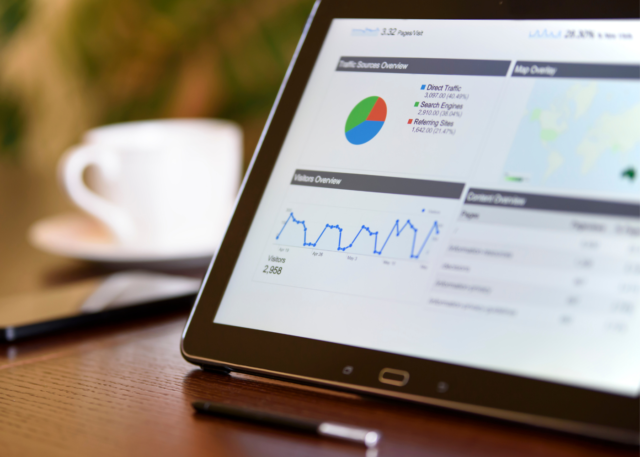How to Choose the Right Restaurant Accounting Software
Restaurant accounting software helps you maintain accurate books, automates manual tasks, and creates crucial reports to assess your financial health. Ultimately, the right accounting software is an essential tool that should simplify all things accounting for your restaurant.
But, not all accounting systems are the same. Some have advanced features and robust reporting, while others offer only the basics. And then there are those that are restaurant-specific and those that are not.
Which solution is better for your restaurant? It depends on several factors from the size of your business to your budget.
Restaurant Accounting Software Checklist
Here are five questions to ask when choosing restaurant accounting software.
1. What Are My Needs?
Your accounting software does not have to do everything. And, it shouldn’t require of team of technologists to implement and maintain. It just has to solve your accounting needs. Whether you’re opening a new restaurant or adding new stores, you’re not limited to restaurant-specific solutions.
For example, you may choose QuickBooks Online or Sage Intacct, which provide standard accounting features such as invoicing, income and expenses tracking, and basic financial reporting.
Why? These platforms easily integrate with software to handle restaurant-specific requirements, like inventory tracking and plate costing.
In contrast, if you think you need a more sophisticated GL system, you may seek solutions such as Great Plains or Oracle E-Business Suite. While these solutions are not always easy to implement and may not be user-friendly, they can provide more advanced features to support your growth.

2. What Is My Budget?
Consider the total cost of ownership of a solution. And, remember that time is money.
If it takes your entire team several months to start getting the benefit, you might not realize the return on your investment for many years to come. This might lock you into thinking that it’s a sunk cost…assuming that you’re not continuing to pay more on a monthly basis.
Consider all of the expenses of implementing and maintaining based on the features you want, keeping in mind that:
- Restaurant operational features that may cost more
- You’ll pay a monthly subscription fee
- Some companies charge hefty upfront implementation fees
- You’ll need to allocate extra resources and money for initial training
Make sure to do your research and know what you’re willing to spend and what you’re getting for that expense.
3. Is the Restaurant Accounting Software Easy to Use?
Employees sometimes struggle to adopt new software that changes their workflow. Software that’s difficult to use will be harder for employees to adopt—and low utilization rates will likely be the norm.
Low utilization rates are common with feature-rich accounting packages. They end up being bloated with clunky interfaces and unnecessary features you don’t use.
The reality is that you, your bookkeeper, general manager, and chef (s) should feel comfortable using the software. It should be intuitive. It should operate smoothly without the bloat. It should have only the features you need.
So, read reviews online, ask for recommendations, request a free demo, and sign up for a free trial to test it out.

4. Is the Software Cloud-Based and Mobile Friendly?
Ideally, you’ll want to invest in a cloud-based system because they are better than traditional ones for several reasons:
- Security: The right cloud-based systems encrypt your financial data using the Secure Sockets Layer (SSL) protocol, which stops unscrupulous individuals from intercepting it. Review what security measures various systems have to help make your decision. A simple Google search with the software name and variations of words like “security measures” and “protocols” should help you get that info.
- Access: You can access the software from any device and use it anywhere with an internet connection.
- Paperless: Store documents in the cloud to reduce paper usage, printing, and distribution costs.
- Organization: Files are accessible to all, from one place. No more sifting through filing cabinets or wading through desktop files.
- Scale: If you open up new locations, you can easily add a new unit without buying new hardware or software.
5. Does the Software Support Restaurant-Specific Integrations?
You want software that integrates with other restaurant management software to improve your workflow, eliminate flipping between programs, simplify data sharing, and ultimately save you time.
Find accounting software that integrates with certain systems and software that may be important to you, such as:
- Your employee scheduling software to pull labor data. For example, a QuickBooks and 7shifts integration lets you export regular and overtime hours from 7shifts into QuickBooks to simplify payroll.
- Your POS (e.g., Toast) to export sales and labor data into your accounting software. In some instances, this may require an additional tool, like xtraCHEF Sync to connect Toast sales data and Quickbooks Online.
- A restaurant management platform, like xtraCHEF, to deliver accurate invoice data into your accounting system within 24 hours of capturing it.

How xtraCHEF Complements Your Accounting Software
Accounting software may help you maintain your books, track your finances, and save you time, but choosing the right solution isn’t easy. However, if you ask the right questions, you’ll find an intuitive solution for your needs and budget.
Regardless of your chosen solution, xtraCHEF is the perfect complement, providing important restaurant-specific features you need.
xtraCHEF lets you:
- Automate time-consuming tasks with an AP management feature that automatically codes invoices and eliminates manual data entry.
- Eliminate paper by digitizing invoices, bills, and receipts. Simply snap a photo of a document with the mobile app, batch scan, and upload.
- Access analytical tools to improve budget, inventory, and food cost management, e.g., cost trend reports.
- Securely share data between the kitchen and accountant for smooth information flow.
To learn more about these features and others, request a demo today.


